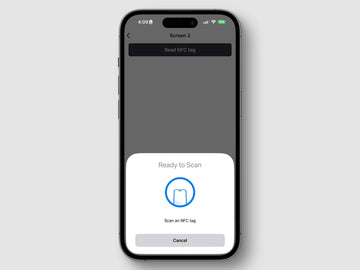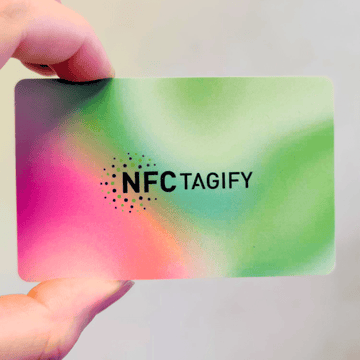Everything You Need to Know About the New NFC Features On iOS 13

Contents
It was a great news for iPhone enthusiasts! The advent of iOS 13 has brought with it an exciting development for users of iPhone 7 and above – the support for Near-Field Communication (NFC). This update heralds a new era of convenience and flexibility for both personal and business uses of NFC technology.
Since iOS 13 has significantly enhanced the capabilities of iPhones in the realm of NFC. Here’s what you can now do with your iPhone:
-
NFC Tag Programming: Users can program NFC tags as long as they have an appropriate application. This feature opens up a myriad of possibilities for personalized automation and smart device interaction.
-
Background Tag Reading: For iPhone XS and later models, iOS 13 introduces the ability to read NFC tags in the background, even without launching a specific app. This seamless integration enhances user experience, making interactions with NFC tags more intuitive and convenient.
-
Access to NFC Chip’s UID: A feature once exclusive to Android smartphones is now available to iPhone users. This allows for a broader range of applications, including traceability, authentication, and access control.
iOS 13 marked a significant milestone in the NFC industry. It has broadened the scope of NFC usage for iPhone users, aligning Apple's operating system with the versatile and ever-evolving needs of its user base. The update equips iPhones with functionalities akin to Android devices, like writing NDEF information (e.g., text and URLs) and native tag access, further enhancing the utility of NFC tags.
Understanding NFC on Apple Devices: It’s essential to recognize how NFC functionality varies across different Apple devices:
-
Older Models (iPhone 7 to X): Users of these models will need an installed app to utilize NFC features. Unlike Android smartphones that can automatically detect NFC tags, these iPhones require app intervention for NFC interactions.
-
Limited Functionality: iPhones currently do not support writing or programming NFC tags natively. Users will need an NFC encoder, a specialized app, or an Android device for these tasks. Alternatively, NFC tag providers can offer encoding services.
Conclusion: The integration of NFC in iOS 13 was a game-changer for iPhone users. It not only simplified everyday tasks but also paves the way for innovative uses in various fields like logistics and ticketing. While there are some limitations in functionality compared to Android devices, the leap forward in NFC accessibility for iPhone users was undeniable. With this update, app developers and businesses hade an exciting opportunity to create NFC-enabled applications that cater to a broader audience, enhancing the overall user experience with NFC technology.
For more insights into NFC technology and its applications, visit our website NFC Tagify. Discover our range of NFC products, including our flagship digital business cards.









